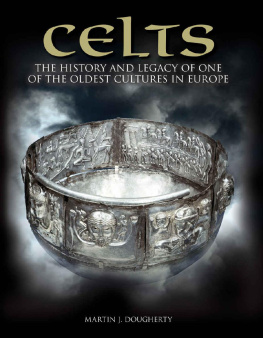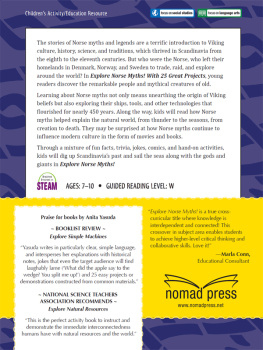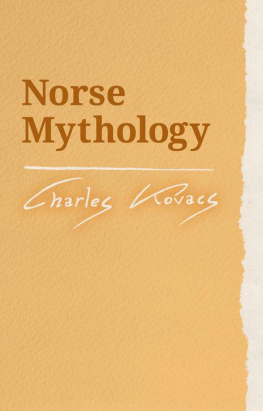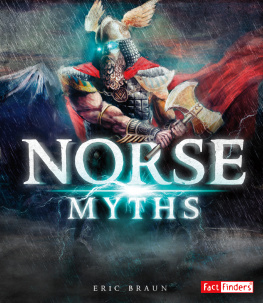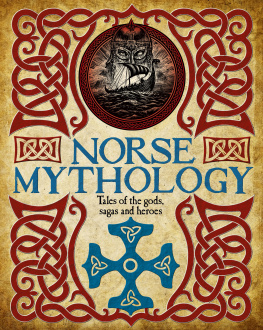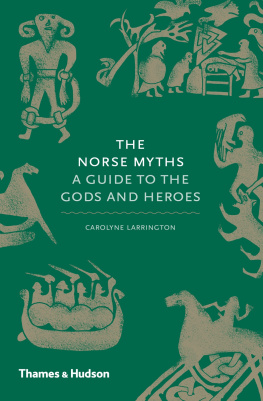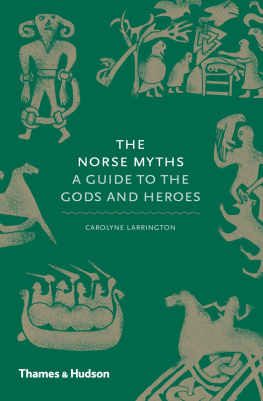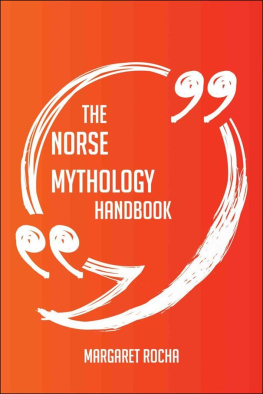MARTIN J. DOUGHERTY
All rights reserved. With the exception of quoting brief passages for the purpose of review no part of this publication may be reproduced without prior written permission from the publisher. The information in this book is true and complete to the best of our knowledge.
All recommendations are made without any guarantee on the part of the author or publisher, who also disclaim any liability incurred in connection with the use of this data or specific details.
Dating from the twelfth century, long after the Viking Age, this tapestry depicts Odin, Freya and Thor. Much of our knowledge of the Norse mythos comes from such later sources; little was recorded at the time.
THE NORSEMEN
The stories of Thor, Odin and Loki are at least vaguely familiar to most of us. Many people can recall often without being able to say exactly where they heard the story that the Norse gods fought against giants and were ultimately betrayed by Loki the trickster. The end of the world and the death of the gods in a grim battle called Ragnarok has also found its way into popular culture.
People who would never consider studying mythology may know a surprising amount about the religion of the Norse people, often without realizing they do. One reason for this is the profound influence that Norse mythology has had upon other cultures, causing the legends to filter through to today, not only in the histories of the Norse people themselves, but from other sources, too. Ideas borrowed from Norse mythology are frequently found in modern fantasy and science fiction such as elves, dwarfs and undead warriors rising from an unquiet grave, for example.
In some cases, the use of Norse characters in modern stories is deliberate. In Marvels graphic novels and movies, Thor and his fellow gods are an advanced race whose science gives them god-like powers, but they are essentially the same people as in the original myths. In David Drakes Northworld series of novels, the lead characters are parallels of the Norse gods Commander North himself lost an eye in return for knowledge of the future, as did Odin the Allfather. This use of mythical characters is quite deliberate on the part of the author.
Other influences may be less obvious, and, indeed, the creator might not be aware of the process by which he or she ended up adding Norse concepts to a novel of modern fantasy or science fiction. Magical weaponry made by dwarfs is a common fantasy trope; few realize that it comes from Norse legend. Similarly, there are numerous Ragnarok Devices and Ragnarok Operations in science fiction; the meaning is obvious even to those who do not know anything about the original mythology.
The modern fascination with the Norsemen has resulted in detailed reconstruction of their homes and way of life, such as here at LAnse aux Meadows, Newfoundland.
THE NEWFOUNDLAND AND GREENLAND NORSE COLONIES ARE LONG GONE, BUT ICELAND PROSPERED AND BECAME A MODERN NATION.
There are many reasons why Norse characters and stories exert such a powerful influence whereas other mythologies do not. For one thing, these are interesting characters whose adventures make a great story. Other mythologies have equally fascinating concepts, but are less well known. They require more explanation and will not necessarily grab the audiences attention in the same way. A familiar story rings true: a familiar character is easy to identify with. So the mythology of the Norsemen continues to inspire and entertain us today, and one reason for that is the Norsemen themselves.
The Norsemen
Often (rather inaccurately) referred to as Vikings, the Norse people inhabited Scandinavia modern Denmark, Norway and Sweden as well as parts of Finland and spread out into other regions. In what is now Russia they became known as the Rus, who heavily influenced the development of that country. Their settlements in Normandy, France, were recognized by the King of the Franks and became a European duchy from which the present monarchy of the United Kingdom is derived. William the Conqueror was Duke of Normandy, something different from a Norse war-leader, but his lineage and traditions originated in the Norse world.
The Norsemen also settled in Iceland, Greenland and even a very small part of North America (Newfoundland) although the latter was extremely short-lived. These Newfoundland and Greenland colonies are long gone, but Iceland prospered and became a modern nation. It was there that many of the heroic sagas of the Norse people were finally written down, and it is from Icelandic tradition that we derive much of what we know about the Norsemen and their gods.
Early raids were conducted with at most a handful of ships, but later in the Viking Age the Norsemen sent forth fleets of hundreds of ships containing thousands of men. They besieged Paris in 845 and again in 8856.
The term Viking, often applied to Norsemen in general, in fact referred to someone who was involved in an expedition, or Vik. An expedition was defined as a journey where it was necessary to take turns at the oars of a ship; short trips where the vessel was rowed directly to the destination in one shift at the oars did not qualify for the term. More generally, an expedition was considered to mean any long journey on land or sea, and anyone undertaking one was a Viking but only until he returned home.
The most famous Norse expeditions were, of course, their increasingly destructive raids along the coasts of Europe, but they were equally willing to trade. Some expeditions were a bit of both, depending on the wealth of the places visited and how well guarded they appeared to be. These raiding and trade expeditions took Norsemen around the coasts of Europe and into the Mediterranean, and, of course, some settled in lands they found pleasing. The British Isles and the coasts of northern Europe and Iceland were extensively settled, as well as areas inland of the Baltic Sea.
Trade expeditions (and raids) got as far as the Arab world, and pushed some way up the Silk Road. There have been somewhat fanciful attempts to connect what appears to be runic graffiti in Southeast Asia with a Viking expedition along the trade routes of the Silk Road to China, then down the Yangtze River and along the Pacific Coast. There are even claims that Norsemen reached Australia, but these do not come from credible sources. Likewise, the settlement of North America has been greatly exaggerated by some, with numerous fake artefacts proving that there were Norse settlements in the American interior when it is almost certain that there were not.


